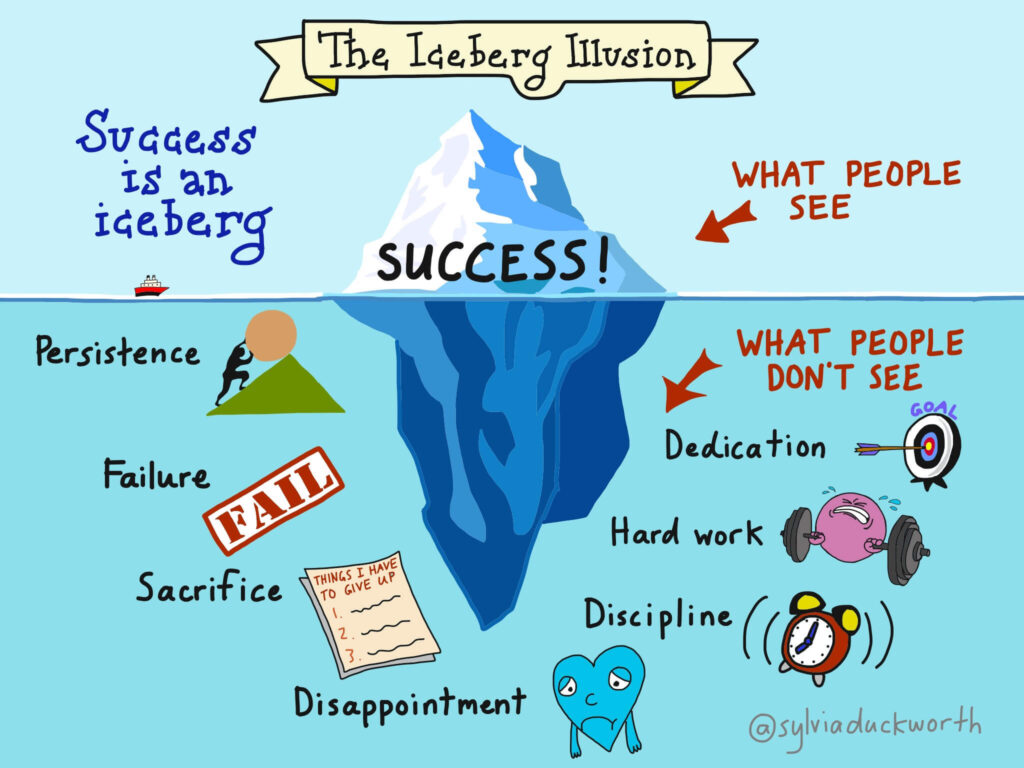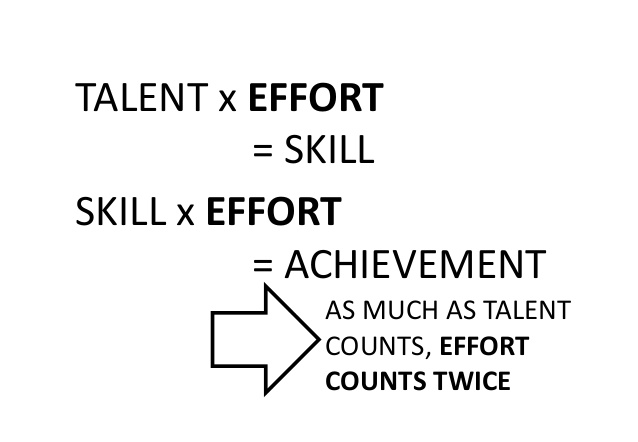Leadership is a widely admired and respected quality. Great leaders apart from being inspirational are fondly remembered. So what makes a leader? And why is it the most sought out quality of all?
Who Is A Leader?
By definition, a leader is any person who leads or commands a group, organization, or country. But is it that simple?
- What attracts this group to this person?
- Which qualities does this person need to have in order to be an effective leader?
- What leadership style does s/he need to have for people to listen to them and be inspired to do better?
- Is a great leader born or can be made?
- What makes a great leader?
5 Qualities Of A Great Leader
1. Inner Belief
The inner belief implies the root, the reason or purpose of all ideas, thoughts and actions. It is what gives all the following steps, the meaning to move forward. It is the seed of all actions.
Usually beliefs serve a larger purpose or idea. It could vary from:
- Having the best quality products
- To the most technologically advanced
- Or being the most cost effective
- Giving back to the community
- Creating awareness of tough issues
- Or changing the world one person at a time
Each effective leader begins with a cause. It is the driving force of all steps taken. It is the vision and mission of a corporation, the slogan of a change-maker, and the chant of the whole group.
A strong inner belief when transformed into the culture of the organisation, motivates all decisions & actions taken by each employee. It seeps into the work ethic & environment and when aligned with an employees values it gives them a purpose of life too.
Steve Jobs changed the world with technology, Jeff Bezos with everything in one place lightning-fast delivery, and Mark Zuckerberg by being a social media revolutionary.
So the first step is to believe in something. What do you truly believe in?
2. Motivation
With belief comes the passion to do something. To change something. It is that fire which will make you jump out of bed and get you through long nights, setbacks and failures.
Starting on an idea which is new and exciting is infatuating but that just the tip of the iceberg. It is passion and commitment which get you to the finish.

Motivation is dedicated effort. Effective and skilled effort towards your goals and dreams. An artist can fall in love with the first stroke and the musician with the first note but it takes 10,000 hours of practice to make a maestro.
For a CEO, motivating employees is an essential ingredient too. Employee engagement and recognition help to build a strong energized workforce. Money can be a short term retainer but is a poor long term motivator. Non – monetary objectives employees may look for are :
- Work climate
- Pride in working for the organization
- Validation for work done
- Innovation
- Developing competency
- Clear & challenging objectives
- Recognition
- Values alignment
And when this motivation turns into grit, success for any leader is not far behind.

So once you have found a staunch inner belief, are you gritty enough to see it through?
3. Empathy
As defined above a leader is a person who commands a group. This group may be followers, employees, or comrades but it is them which defines the leader.
When a leader understands, that it is the team that always comes first, he will make decisions that will be for all, not for one. For more understanding of this thought please refer to my article – Emotional Intelligence At Work.
Empathy is the heart of any leader. It is means to truly understand another’s feelings and guide your responses and actions by putting yourself in their shoes. It makes a leader a mentor, a coach and a friend.
Some benefits of empathy are:
- Empathy allows leaders to build and develop relationships with those they lead. This leads to trust in the organization and a large number of loyal retained employees.
- It encourages leaders to understand the root cause behind poor performance and help struggling employees improve and excel.
- Empathy incorporates attentively listening to all ideas. To make people feel validated and seen. This in the long term makes them more engaged and happy. It also makes a safe environment for employees to voice thier concerns, complaints, and improvement ideas.
- When the leader is a role model of empathy, it is exhibited in colleagues and employees too. This helps them to collaborate well on team projects and use functional groups to facilitate innovative breakthroughs.
- Empathy helps to understand the perspective of employees from different backgrounds and abilities and gives the unique capability to identify the right person for a particular task or project.
At the onset, empathy may seem like an altruistic trait but with multinational collaborations and global teams being the order of the day, empathy has become an essential trait for an effective leader.
Inner belief and motivation will make you survive, but empathy will make your organization thrive. Where are you on the empathy curve today?
4. Gratitude
In his research of the 24 Human Character Strengths & Virtues, Dr. Martin Seligman has identified the top two traits needed for authentic happiness and one of them is Gratitude.
Gratitude simply means to be thankful for. A grateful leader is an appreciative one. He is thankful for his own strengths and opportunities and that of his team members. Moreover, he is also thankful for the lessons learned through failures & hardships.
Benefits of Grateful Leadership:
- Gratitude helps to stay optimistic. Counting your blessings and starting with what you have enables a hopeful outlook on the future.
- It also brings a lot of calm and peace within groups. Thankfulness and anger never go hand in hand. When minds are peaceful, better long term oriented decisions can be made.
- Gratitude increases employee satisfaction and motivation. Appreciated & validated employees feel seen and heard and want to strive for higher results every time.
- Moreover, it also helps to build trust in the organization. Grateful leaders also emit modesty and integrity. They are true supporters and always highlight team efforts instead of thier own.
- Lastly, gratefulness builds resilience. When the storm comes, grateful leaders focus on the positive parts, humbly own up to mistakes, sincerely support and appreciate team efforts and constantly improve to come out stronger and more capable.
Empathy enables compassion while gratitude facilitates appreciation for employees, clients, and suppliers. This mindest instills peace, courage, integrity, and humility that are the hallmarks of a true leader.
What daily practice of gratitude do you incorporate to keep your gratitude cup full?
5. Resilience
Resilience is the ability to bounce back from adversity and grow from challenges faced. A strong faith, inner belief, or trusting relationships form the base of resilience. They help us to find some haven in troubling times.
Gratitude for what you have and faith in something larger than yourself are stepping stones for overcoming obstacles. This is the foundation, apart from this we need two key qualities to be truly resilient.
Optimism
Optimism simply means to look at the bright side of things. It can come from deep gratitude, zest for life, or how we tend to explain situations to ourselves.
Benefits Of Optimism For A Leader:
- An attitude of optimism helps to look forward to the future with hope. Due to this, optimists work towards their future.
- Optimism makes you constantly improve yourself and consider improvements for the organization. It could be in policies, workplace environments, or processes.
- It helps you explain your situations and consequences in a positive manner. When a failure occurs it need not affect every area of your life and dampen self-belief. And you know it is not permanent and the tide will change.
- Lesser tendency to blame others. As an optimist you are constantly reflecting on your actions, finding the source of your success and mistakes, and working on them. So there is less blame and more action.
- Many studies have shown, optimists have better health, mental well being, and relationship satisfaction. Authentic happiness is infectious and happy people make better leaders.
Creativity
Creativity here I use in regard to the unique knack to improvise. To think out of the box or use creative approaches to solve a problem. Resilient people are innovators and extremely resourceful. This skill is called bricolage. To be able to improvise with the resources at hand.
To know more about resilience and bricolage, please click here.
Example in Creative Leadership
A Japanese soap factory used to produce soapboxes with too many instances of boxes delivered without the soap inside.
After receiving several customers complaints, the factory manager could not afford to let so many defects out of his factory anymore… but, like everyone, he had tough budget constraints: no question to hire someone to check every single box had a soap inside before being delivered; no question to invest in an expensive machine to X-ray or even check the weight of each box.
So, the soap manager brainstormed with his team, with the objective to find a simple and cheap solution to prevent the defects (empty boxes) from being delivered to the customers… and the solution came! A fan!
Put a fan above the last element of the production chain: empty boxes will fly away! It took very little time and money to put the fan in place, and now the soap factory regained the confidence of its customers.
Resilience is the final step toward being an effective leader. It is the culmination of all the above aspects. Together all these qualities are the difference between an average and a great leader!

